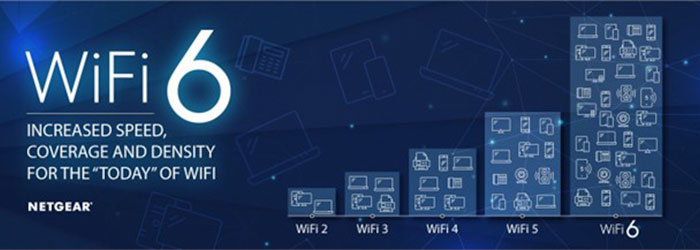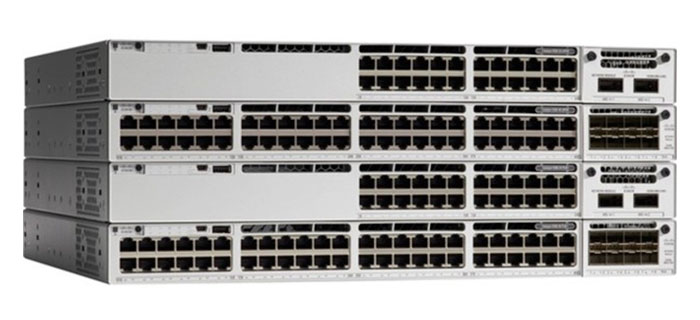
The WiFi 6 Technology is the latest version of the 802.11 standard, a standard used to name wireless data transmission networks. In other words, Wi-Fi 6 is not a new way to connect to the Internet, but rather an updated version of previous Wi-Fi standards.
For many years, the names of wireless standards with their technical names, which are a combination of 802.11 and one or more lowercase letters, were used to name wireless network standards.
Technical names such as:
Now in the new generation, it was decided to put a number next to WiFi and in this way, people can easily get to know the names of the standards and their order of sequence.
For example, WiFi 6 is the same as 802.11ax and the previous version, WiFi 5, is the same as 802.11ac.
The most up-to-date network standard improves internet speed by 30% compared to the previous version, WiFi 5.
Of course, we need to consider following two points:
Until today, various tests have been conducted by some companies to determine the internet speed with the benefit of Wi-Fi 6, and the results of all of them have reported a 30-40% increase in speed compared to Wi-Fi 5.
MU-MIMO and OFDMA are the main technologies of Wi-Fi 6 standard equipment that enable faster connections.

MU-MIMO (Multi-User Multiple Input Multiple Output) technology allows the router to communicate with several devices simultaneously without losing speed.
In fact, several users can benefit from the Internet at the same time without reducing the network speed.
Even now, some routers have this technology, but finally it is possible to communicate with the router for 4 systems without speed loss.
Now, with the benefit of Wifi6, the number of devices that can connect to the Internet simultaneously using one router has been doubled, that is, 8 users can connect to the network without any loss of speed.
OFDMA (Orthogonal Frequency Division Multiple Access) provides the possibility of increasing network capacity, reducing delay time, and improving download and upload speeds.
The new OFDMA feature in Wifi 6 makes it possible for the router to perform multiple tasks in the best way.
To understand the concept of OFDMA in simple terms, imagine trucks, each of which transports a cargo to a designated destination, such that each truck can only deliver its own cargo to a designated destination, even if part of the truck’s capacity is empty, it is not allowed to carry another cargo.
But with the help of OFDMA technology, each truck can transport multiple cargoes at the same time.
When 60% of a truck’s capacity is completed, the network allows it to fill the other 40% with other cargoes and deliver to other users.
From a technical point of view, the OFDMA technology allows the Wifi 6 router to divide the used frequency bands (2.4 or 5 GHz) into smaller channels. It can divide the data required by each device between the channels to eliminate the problem of signal interference and increase the speed.
Cisco has launched a new generation of Cisco Catalyst 9100 access points that support the WiFi 6 standard. The Cisco Catalyst 9100 series access point with the ability to support IoT and integration with the Cisco DNA Center platform has enabled organizations to provide a wide range of services and new features.
The Cisco Catalyst 9100 access point is the latest generation of Cisco access points that supports the WiFi 6 standard. With the introduction of the WiFi 6 standard, the IEEE Institute has created a new revolution to improve the speed of data transmission between users and devices.
Also, by improving the ability to transfer information to several users at the same time, it has given a better quality to the experience of using the wireless network. Using the WiFi 6 standard and unique technologies in this series, Cisco has provided the ability to transfer data faster among multiple users at the same time.

The Cisco Catalyst 9800 Wireless Controller series is the newest series of wireless controllers manufactured by Cisco. This licensed solution supports the WiFi 6 (802.1ax) standard and with the ability to support IoT and integrate with the Cisco DNA Center platform, it has provided a wide range of services and new features for organizations. Wireless controllers of the Cisco Catalyst 9800 Wireless Controller series have high scalability and flexibility, which will meet the current and future needs of organizations.
With the ever-increasing expansion of automation technologies in today’s network infrastructure, the need for equipment capable of playing a role in this cycle of intelligence is felt more and more. The Cisco Catalyst 9800 Wireless Controller is fully capable of connecting to Cisco’s DNA platform and can play a key role in making the network smarter by communicating with other components of the wireless network and network infrastructure.
The Cisco Catalyst 9800 Wireless Controller, using the Catalyst XE operating system, provides much higher security features compared to other controllers. Some of the results of these security features are checking all the packets in transit to prevent spoofing and phishing attacks, detecting the interference of waves and identifying the same SSID, and the possibility of sending packets to use the IPS system.
Cisco has set these features by default based on security recommendations so that there is no need for complexity in the settings. The Cisco Catalyst 9800 Wireless Controller can increase fault tolerance in the network by being able to play a role in the core layer of the network and using HA methods. Also, with the support of Cisco Catalyst 9100 series access points, it is possible to use the advantages of the distribution layer in large organizations.